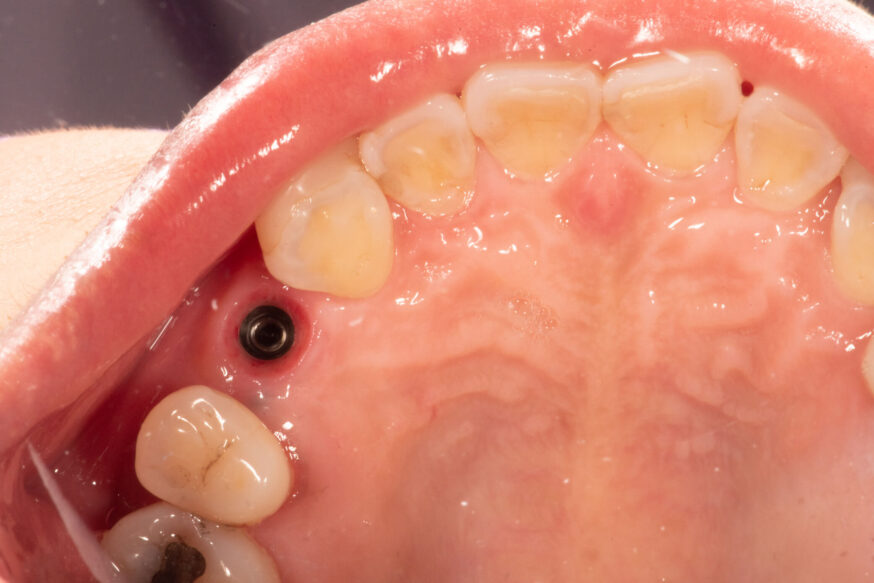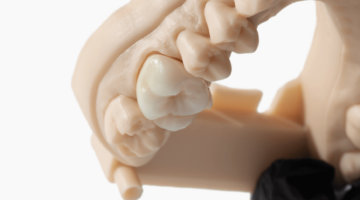What is an emergence profile, and why are they important?
The emergence profile of a tooth is the portion of axial tooth contour that extends from the base of the gingival sulcus past the free margin of the gingiva into the oral environment.
The goal is to fabricate a restoration that supports the health of the surrounding soft tissue. Also, proper health, function, and esthetics are critical to achieving the best results. The emergence profile is important to maintaining gingival health, preventing plaque-retaining spaces, and maintaining good oral hygiene.
3 steps to creating the perfect dental emergence profile
Achieving an ideal emergence profile involves precisely placing an implant in 3-dimensional space.
What are the key steps to optimize the emergence profile of an abutment?
1. Choose the correct materials
For a successful emergence profile, the implant diameter must match the emergence profile of the final restoration while also keeping in mind subgingival depth. The physical and chemical properties of implant materials regarding biocompatibility, corrosion resistance, and fracture resistance have improved in recent years.
Implants are usually manufactured of titanium, titanium alloy or zirconium.
Commercially pure titanium usually contains trace elements of carbon, iron, nitrogen, and oxygen, which improves its mechanical qualities.
- Titanium alloy is titanium mixed with aluminum and vanadium and heat-treated to improve its strength.
- Zirconium is a good choice for patients who have metal allergies or sensitivities. Choosing zirconium eliminates the possibility of metal showing through the gums or becoming exposed. Zirconium implants are usually made as one piece, including the post and the abutment.
Currently, the most popular implant components are titanium or titanium alloy.
Soft-tissue development is critical to the long-term success of dental implant treatment, and custom-designed healing abutments play an important role in achieving a predictable and long-lasting restoration.
2. Contouring the emergence profile
The correct implant angulation and position are key to ensuring an implant-supported restoration is long-lasting, functional and esthetically pleasing.
Facial emergence
Beginning from the implant shoulder, with a slightly flat/concave profile, towards the height of convexity at the point where the mucosal margin is established.
Interproximal emergence
Beginning from the implant shoulder, with a straight emergence, towards a slight convexity just apical to the contact area, providing support for the interproximal tissue. The distance implants are placed from natural teeth (1.5mm) and another implant (3mm). Placing implants far enough apart allows for dental papilla to fill in properly avoiding black triangles.
Palatal emergence
Beginning from the implant shoulder, with a straight to slightly convex emergence towards the mucosal margin, focusing on matching the palatal contours of the adjacent teeth so that there is a smooth transition between the two.
3. Accurately placing a dental implant
The emergence profile directly influences how you place an implant. For example, the connection type (external or internal) and the implant collar influence how deep an implant should be placed to retain biological width and preserve the surrounding bone.
Implants are manufactured with two types of connections: internal and external.
- External connection implants: The implant is connected to the abutment externally with an attachment screw. The implant stays outside the bone.
- Internal connection implants: The implant is designed to allow the abutment joining the implant and the prosthesis to be inserted a few millimeters inside the implant.
How does digital dentistry improve the accuracy of emergence profiles?
Digital dentistry combines intraoral scanning, cutting-edge digital design and precision milling for accurate emergence profiles, excellent functionality, optimal esthetics and proven results.
Scanning workflow is the key to success
After the healing cap is removed, the doctor scans the opposing arch and the emergence profile. While scanning, scan bodies capture 3D data points (trajectory, depth, and rotation). The resulting data points provide the lab with highly accurate information to produce a precision implant restoration containing the margins, occlusal contacts, and the doctor’s preferences. Scanning with a properly seated scan body is critical to creating an accurate restoration.
Digital implants with Dandy
A successful implant restoration is the result of treatment planning, quality and quantity of bone at the site, surgical technique, and the type of restoration.
At Dandy, we help doctors learn digital scanning techniques through –
- Free 1:1 training
- Live scan reviews
- Scan body assistance and more!
Dandy has integrated the intraoral scanner, the lab, and end-to-end support to bring you the best restorative quality, visibility, control and clinical outcome.
Schedule a digital dentistry consultation with our team today!
Sources:
https://epublications.marquette.edu/cgi/viewcontent.cgi?article=1468&context=theses_open (pdf)
https://blog.ddslab.com/emergence-profiles-implant-supported-restorations



